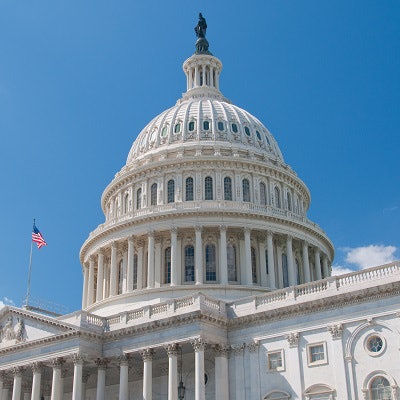
Use of imaging in the Medicare population continues to hold relatively steady -- even in the face of the COVID-19 pandemic, according to a report to the U.S. Congress issued March 15 by the Medicare Payment Advisory Commission (MedPAC).
That being said, it's difficult to overstate what dramatic effect the pandemic has had on Medicare beneficiaries and on MedPAC's ability to make recommendations to Congress for 2022, noted commission Executive Director Jim Mathews, PhD, in a teleconference.
"Here we are at the beginning of 2021, having gone through most atypical years in my memory in terms of changes in the provision of healthcare in the Medicare system," Mathews said. "We hope that by 2022, the pandemic will be fading in the rearview mirror, [but in the meantime,] we've tried to separate the temporary effects of pandemic from its longer-lasting ones, even though our crystal ball isn't any clearer than anyone else's."
In any case, the commission is not recommending any payment updates for 2022, it said.
"The Commission's deliberations on payment adequacy for clinicians are informed by data assessing beneficiaries' access to services, the quality of their care, and Medicare payments and providers' costs," it wrote. "We find that, on the basis of these indicators, there should be no update to payment rates in 2022."
Middle of the pack
The report found that Medicare payments per beneficiary are growing, but imaging continues to run in the middle of the pack in terms of growth in spending by type of service. The commission found the following allowed charge growth between 2018 and 2019 across a range of services:
- Anesthesia, 2.6%
- Evaluation and management services, 2.9%
- Imaging, 3.5%
- Major procedures, 5.1%
- "Other procedures" (which includes services such as radiation oncology, dialysis, chiropractic, chemotherapy, and physical and occupational therapy), 5.6%
Imaging also didn't stand out in terms of its share of overall percentages of allowed charges in Medicare. Imaging made up 11% of charges, after evaluation and management (50%) and other procedures (23%), MedPAC reported.
| Changes in units of imaging service, allowed charges per beneficiary, 2014-2019 | |
| Measure | Percent change |
| Average annual change in imaging units of service per beneficiary, 2014-2018 | 0.1% |
| Average annual change in allowed imaging charges per beneficiary, 2014-2018 | 0.9% |
| Change in imaging units of service per beneficiary, 2018-2019 | 2.6% |
| Changes in allowed imaging charges per beneficiary, 2018-2019 | 3.5% |
| Share of 2019 allowed charges | 11% |
Medical imaging did top the list of the highest volume of low-value imaging services, with nonspecific back pain (12.6 procedures per 100 beneficiaries), leading prostate-specific antigen (PSA) screening in men 75 and older (8.7 procedures per 100 beneficiaries) and colon cancer screening in adults over 85 (6.9 procedures per 100 beneficiaries).
MedPAC is aware that "managing updates and relative payment rates alone will not solve what have historically been fundamental problems with Medicare fee-for-service payment systems -- that providers are paid more when they deliver more services, and that these payment systems seldom include incentives for providers to coordinate services over time and across care settings," it noted.
To address these problems directly, two approaches must be pursued, the commission wrote.
"First, payment reforms need to be implemented more broadly, coordinated across settings, and pursued as expeditiously as possible," the commission wrote." Second, delivery system reforms that have the potential to encourage high-quality care, better care transitions, and more efficient provision of care need to be enhanced and closely monitored, and successful models need to be adopted on a broad scale."



















